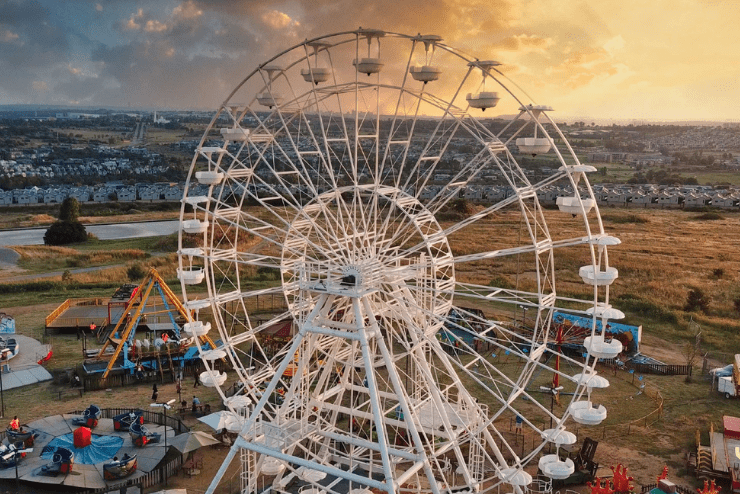Johannesburg North Attractions Fundamentals Explained
Johannesburg North Attractions Fundamentals Explained
Blog Article
About Johannesburg North Attractions
Table of ContentsThe Best Strategy To Use For Johannesburg North AttractionsGet This Report about Johannesburg North AttractionsThe Johannesburg North Attractions PDFsThe Ultimate Guide To Johannesburg North AttractionsOur Johannesburg North Attractions PDFsHow Johannesburg North Attractions can Save You Time, Stress, and Money.
The city grew on the side of the Witwatersrand Key Reef, a subterranean stratum of gold-bearing quartz-silica conglomerate that arcs for hundreds of miles under the Highveld - Johannesburg North attractions. Most of the gold mines in the city stopped procedure in the 1970s, but in its day the Witwatersrand gold industry accounted for even more than 40 percent of the world's annual gold production.Johannesburg has a temperate climate. The city takes pleasure in concerning 8 hours of sunlight per day in both wintertime and summertime.
What rain the city receives falls nearly exclusively in the summertime, typically in stunning late-afternoon electrical storms. Air pollution postures a substantial problem, specifically in the cold weather, when thermal inversions hamper the westward circulation of air from the Indian Sea. Air pollution is most severe in the densely worked out Black townships on the city's perimeter, where lots of homeowners still count on coal for fuel.

Everything about Johannesburg North Attractions
The equilibrium of the city is occupied by whites. Holiday accommodation varies in personality and high quality. Soweto is notorious for its unlimited rows of municipally constructed, two-room matchbox homes, yet it additionally has a couple of prosperous territories as well as bursting squatter camps, where 10s of thousands live without water, power, or sanitation facilities.
Physical growth, although somewhat restricted by transportation, continued swiftly as immigration to South Africa, and Johannesburg specifically, increased dramatically. This issue was addressed in the 1930s when the automobile was introduced in mass production to South Africa. Automobiles were, essentially, restricted to the affluent, and allowed them to relocate to the north of the city and commute right into the centre.
Most inadequate suburbs were combined, with poor blacks and whites living with each other, although the wealthy suburban areas were usually booked for whites.
The previous system of eleven numbered areas was reorganised in 2006. Marshalltown, as seen from the top of the Carlton Centre. The M1 and M2 run behind the buildings, and the southerly residential areas expand past the highway border. The central city of Johannesburg lies within the city's Area F. The number of individuals living in the internal city on a casual basis is unidentified, as many are illegal immigrants. The unemployment, education, and age accounts of the area are all unidentified, due to the trouble of getting reliable details regarding the location.
Little Known Facts About Johannesburg North Attractions.
Yeoville read here and Bellevue have a mix of apartment and single household systems on small whole lots. The area is situated on a hilly divide that ranges from east to west. The most noticeable geographic feature is Observatory Ridge, which is called for the big observatory situated on it. The entertainment areas are no more used, due to safety and security troubles.

Little Known Facts About Johannesburg North Attractions.
R. Tambo International Flight Terminal). The eastern suburbs are a few of the earliest locations of Johannesburg, there are huge neighborhoods of Jewish and other European backgrounds, the bulk of the population is English talking. There are 3 fairway along with a number of protected ridges with viewsites. There are numerous strong and up-market amusement and shopping locations in the eastern such as the Eastgate Mall and the Greenstone shopping center.
The location is primarily made up of old "matchbox" residences, or four-room homes built by the government, that were built to supply cheap accommodation for black employees during apartheid. Soweto is an acronym, representing "South Western Townships". Street click to read after street around is lined with matchboxes; however, there are a couple of smaller sized locations where prosperous Sowetans have developed residences that are more comparable in stature with those in more upscale residential areas.
Hostels are one more noticeable physical attribute of Soweto. Originally constructed to house male migrant workers, several have been improved as houses for pairs and households. The N1 Western Bypass skirts the eastern boundary of Soweto. The suburb was not historically enabled to develop work centres within the area, so nearly all of its homeowners are travelers to other components of the city.
The Johannesburg North Attractions Statements
The N1 Western Bypass links the north residential areas with the north-western suburbs. The property locations in the northern residential areas are mainly official, without any significant areas of casual site link housing, or housing that does not have an irreversible structure. Although this is an established location, there is a trend of land usage modification from residential to business, specifically along major arterial roads and around well-known nodes.
Roadways to the eastern and west are less well developed, as there are no freeways travelling in that instructions. Towards the north border of the city, the thickness of advancement reduces, leaving big areas of undeveloped land around Midrand.
Some Known Questions About Johannesburg North Attractions.
, which is located on a hill neglecting the internal city and Hillbrow.
Report this page